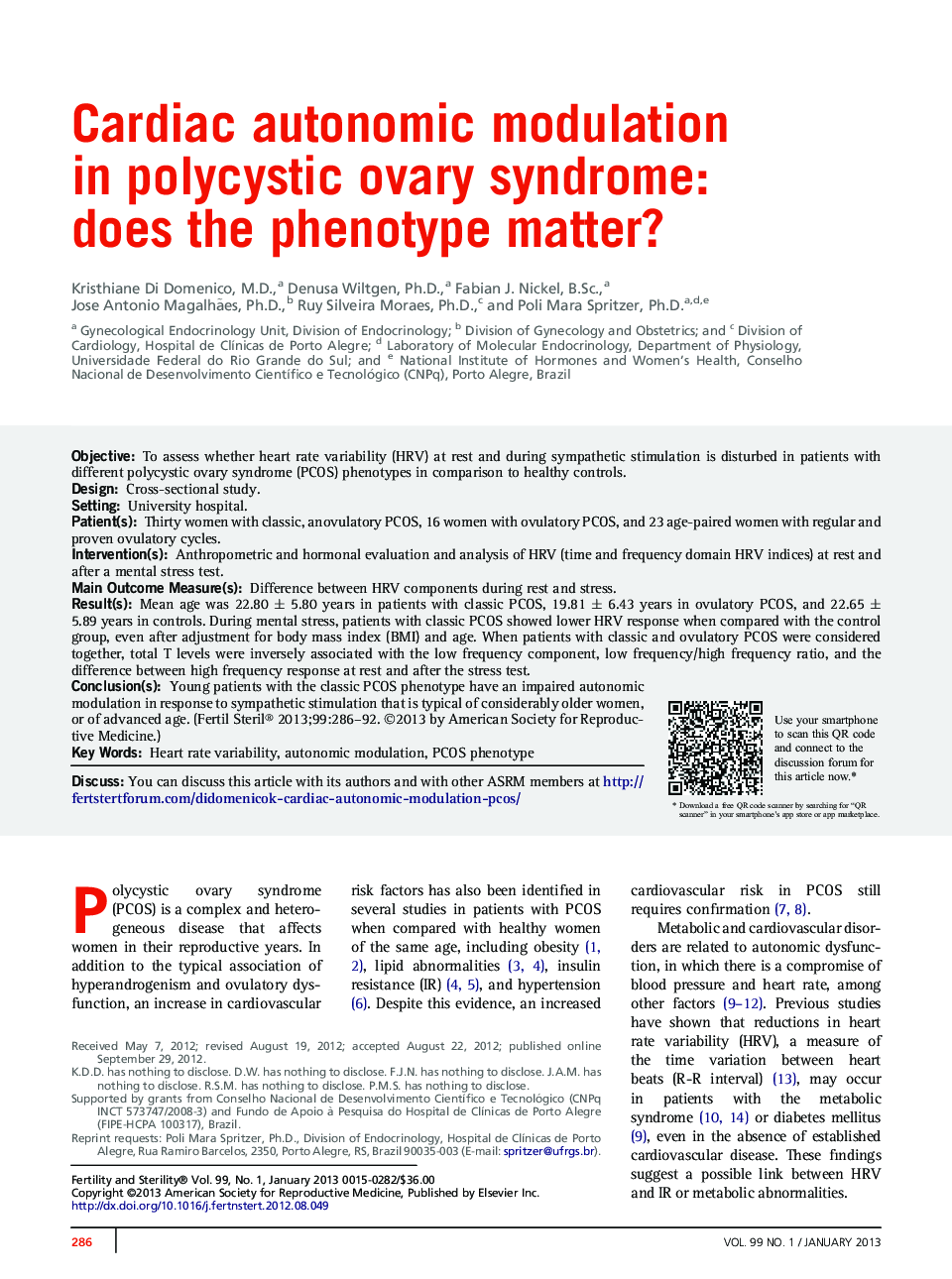| Article ID | Journal | Published Year | Pages | File Type |
|---|---|---|---|---|
| 6179286 | Fertility and Sterility | 2013 | 7 Pages |
ObjectiveTo assess whether heart rate variability (HRV) at rest and during sympathetic stimulation is disturbed in patients with different polycystic ovary syndrome (PCOS) phenotypes in comparison to healthy controls.DesignCross-sectional study.SettingUniversity hospital.Patient(s)Thirty women with classic, anovulatory PCOS, 16 women with ovulatory PCOS, and 23 age-paired women with regular and proven ovulatory cycles.Intervention(s)Anthropometric and hormonal evaluation and analysis of HRV (time and frequency domain HRV indices) at rest and after a mental stress test.Main Outcome Measure(s)Difference between HRV components during rest and stress.Result(s)Mean age was 22.80 ± 5.80 years in patients with classic PCOS, 19.81 ± 6.43 years in ovulatory PCOS, and 22.65 ± 5.89 years in controls. During mental stress, patients with classic PCOS showed lower HRV response when compared with the control group, even after adjustment for body mass index (BMI) and age. When patients with classic and ovulatory PCOS were considered together, total T levels were inversely associated with the low frequency component, low frequency/high frequency ratio, and the difference between high frequency response at rest and after the stress test.Conclusion(s)Young patients with the classic PCOS phenotype have an impaired autonomic modulation in response to sympathetic stimulation that is typical of considerably older women, or of advanced age.
